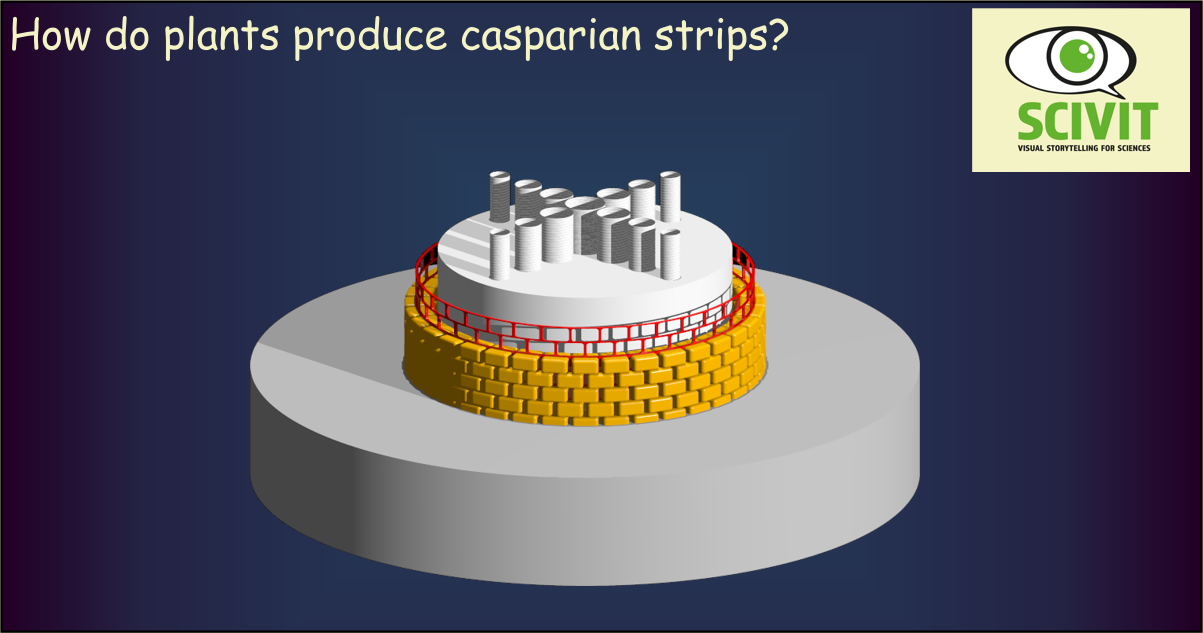
How do plants produce Casparian strips?
Importance of the endodermis in root transport processes
The outer, absorptive and metabolic part of a root is separated from its central transportation unit (the central cylinder) by a tight border: the endodermis. This layer of cells has wax-like substances embedded in their walls and occludes any passage of water through these walls. Therefore all water and minerals entering the plant from the soil have to be transported across a plasma membrane along the way into the root. This way plants are able to partially control what they are taking up from the soil and to transport compounds against gradients of concentration.
The Casparian strip as a crucial cellular border
Wax-like substances are embedded in endodermal cell walls only in a small strip, the Casparian strip, surrounding each cell thus effectively separating inner and outer root regions. How is the Casparian strip established and maintained? Its precise location and orientation is crucial for its function – how is this achieved reliably? Two groups of scientists, from Japan and from Switzerland and Austria, have presented data in a recent Science issue providing new insights into the making of the endodermal border.
A peptide from the central cylinder regulates Casparian strip formation and maintenance
Both groups have demonstrated the existence of a small peptide hormone which is produced in the central cylinder and then diffused outwards. In case the Casparian strip is lacking or damaged, a recptor complex composed of molecules from the inner and outer side of endodermal cell is able to form. This complex can bind the peptide hormone from the central cylinder and then initiates formation and deposition of wax-like substances. This relatively simple mechanism ensures that the Casparian strip always stays tight.
Neueste Kommentare